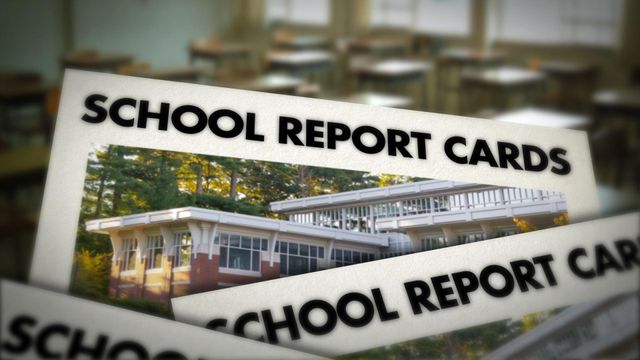10 things to know about NC school report cards
The North Carolina Department of Public Instruction has released the 2014-15 school report cards, which provide information about all public, charter and alternative schools in the state. Before you check out your school or district report card, here are 10 things you should know:
Posted — Updated1) Not all of the data is included ... yet
- Educator effectiveness data
- State-level scores from the 2015 National Assessment of Educational Progress (NAEP) in reading and math
- College course completion
2) What's new?
- STEM (Science, Technology, Engineering and Math) designations have been added to the school information tab
- Schools designated as Focus schools due to failure to meet participation targets for three years are identified in the report cards
- A report on historical trends in student and teacher populations is included at the state level.
3) Your child's school might not be included
This year's report card only includes schools that were open during the 2014-15 school year. New schools opened this year will be included when the next report card is issued in fall 2016.
4) Using an Apple device? Report cards might not load for you
The new school report cards site does not work with Safari, the native Internet browser of Apple devices, including Macs, iPads and iPhones. To view the report cards on those devices, you'll need to install a different browser that supports Adobe Flash, such as Chrome or Firefox.
WRAL News asked Diane Dulaney, who handles school report cards for the state Department of Public Instruction, if they plan to add support for Apple users in the future.
"We will evaluate next steps for the 2016 School Report Cards next week," Dulaney said. "The browser issue is one that I will raise with the vendor and NCDPI leadership, but no solution has been decided on yet."
5) You can compare schools, but don't rank them
The school report cards were created to allow the public to get a detailed view of each school and district and to allow side-by-side comparisons. However, NCDPI warns against using the data to rank schools "since schools are structured differently from one another in terms of size, grade levels, student populations served and the programs offered ... It would be incorrect to determine that one school is better than another based on slight differences between data points."
For instance, report cards for charter and alternative schools vary slightly. Since charter schools are not part of a school district, only state comparisons are provided on their report cards. Also, quality teacher data are limited for charter schools due to the flexibility allowed in their operations, and grade ranges in alternative schools may vary from year to year. For example, an alternative school may be listed as a K-12 school but only have students in grades 3-10 this year.
Federal schools, state-operated schools and other special schools do not receive report cards due to differences in the way data are reported for those schools.
6) What does "." mean?
As you view the report cards, you might notice "." in some data tables. NCDPI includes that to protect student privacy when the amount of students in a group is less than 5 percent.
7) Schools will distribute snapshots
School officials will be distributing local snapshots, or summary versions of the report cards, to parents across the state this week. If you don't want to wait for your school to send them out, the snapshots are available on the {{ a href="external_link-15149949"}}N.C. School Report Cards website{{/a}} by clicking on "school report card," then "school profile" and "school snapshots."
8) Grades A-F are included
For the second year, school performance grades (A-F), as required by state law, are included on the school-level report cards for traditional and charter schools. Also, the statewide end-of-grade and end-of-course test results are reported for the five achievement levels: superior, solid, sufficient, partial and limited command.
9) SAS helped with analytics – for free
This is the 14th year North Carolina has issued school report cards and the second year that Cary-based SAS has helped with the analytics. SAS provides the software licenses and consulting support for school report cards to NCDPI at no cost. The previous version of the report cards was custom built by NCDPI staff, so SAS participation saves the agency (and taxpayers) man-hours, according to school officials.
10) Love data? Here's how to dig deeper
• Credits
Copyright 2024 by Capitol Broadcasting Company. All rights reserved. This material may not be published, broadcast, rewritten or redistributed.





